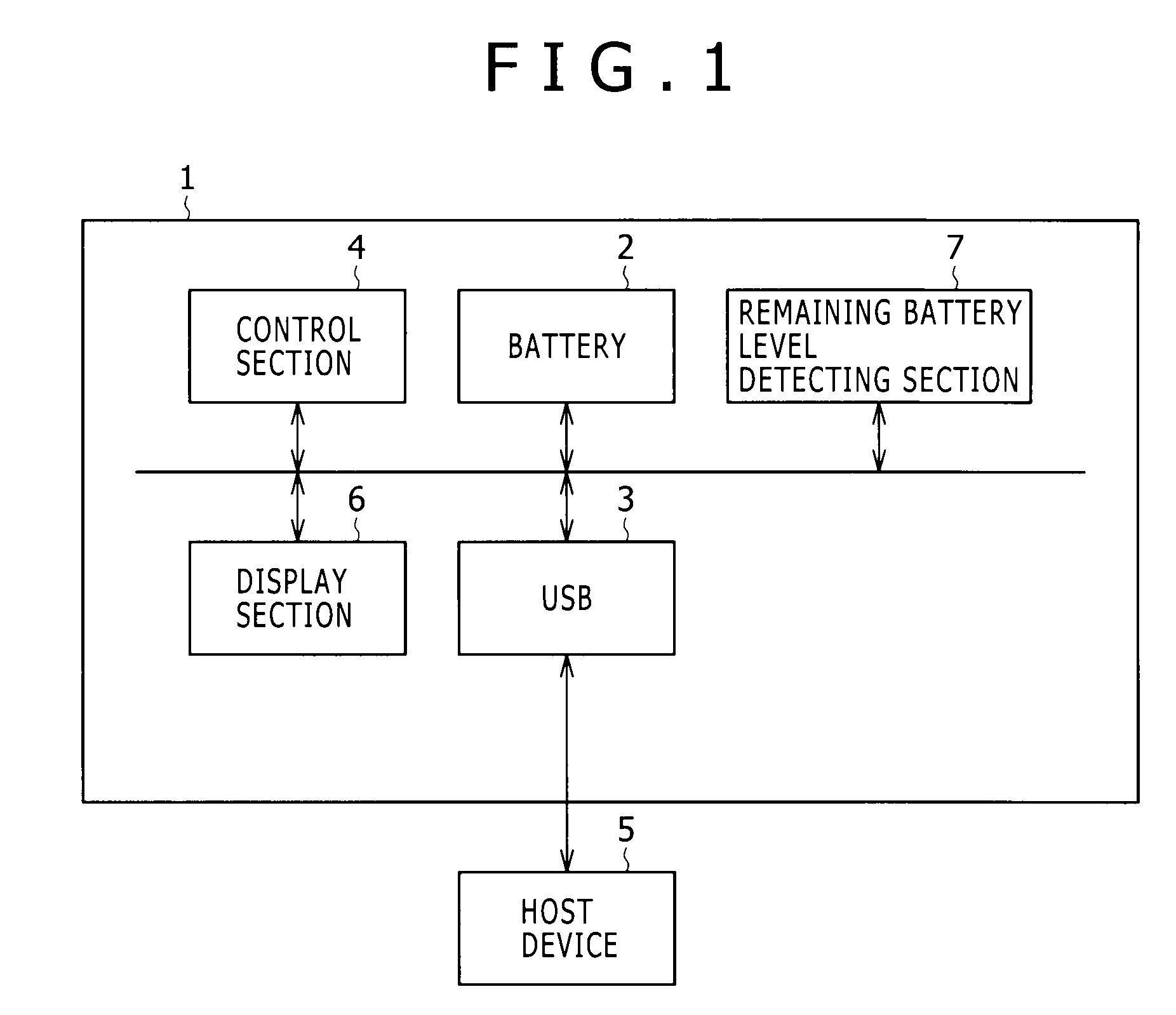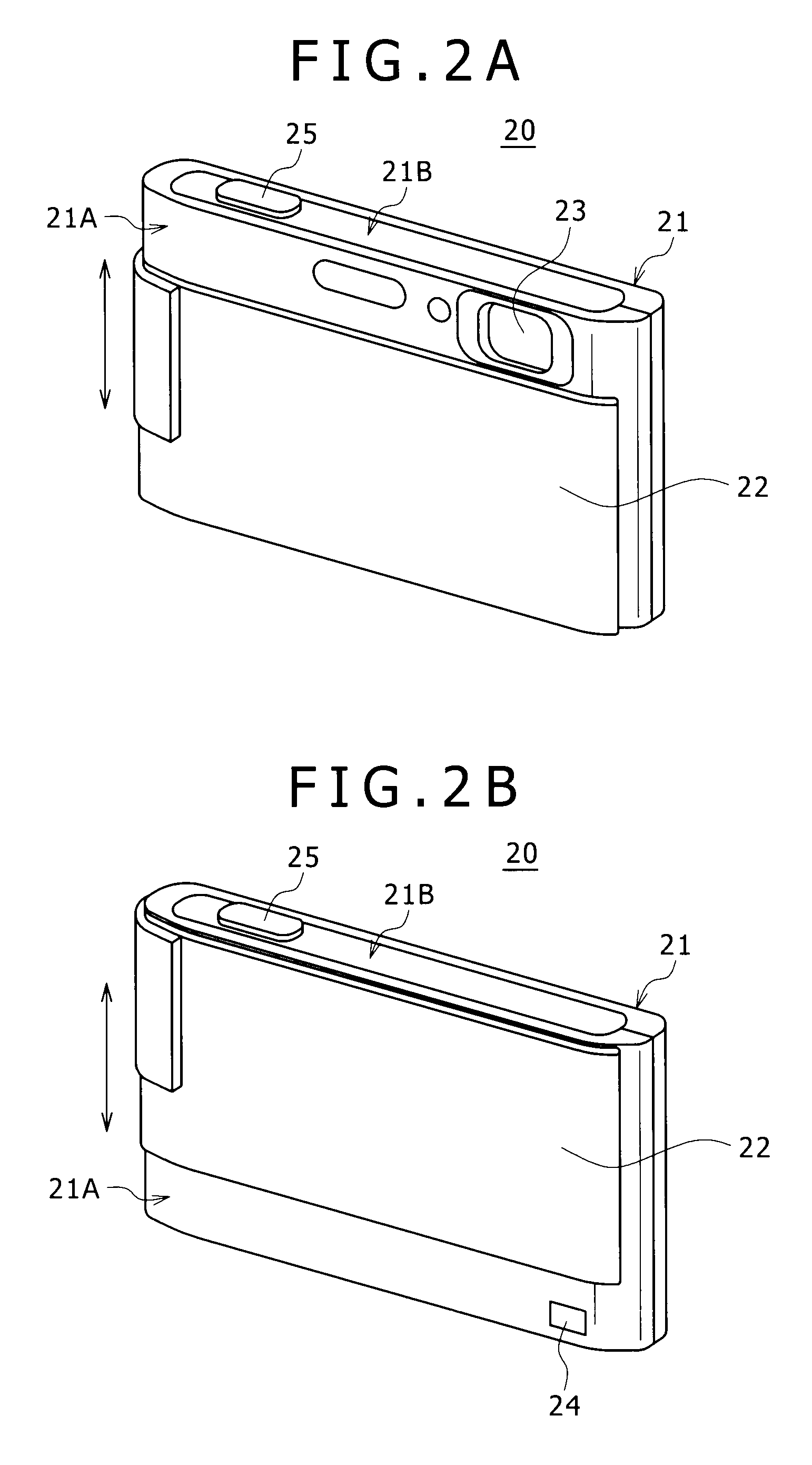Terminal apparatus, terminal apparatus controlling method, and control program
a terminal apparatus and control method technology, applied in the direction of television systems, coupling device connections, instruments, etc., can solve the problems of host devices, failure to eliminate the above-mentioned disadvantage, complex and costly structure, etc., and achieve the effect of minimizing the amount of power being dissipated from the battery
- Summary
- Abstract
- Description
- Claims
- Application Information
AI Technical Summary
Benefits of technology
Problems solved by technology
Method used
Image
Examples
first embodiment
1. First Embodiment
1-1. Overview of the First Embodiment
[0051]The first embodiment of the present invention is outlined below. The description of the overview of the first embodiment will be followed by an explanation of a specific example of the first embodiment.
[0052]In FIG. 1, reference numeral 1 stands for a terminal apparatus practiced as the first embodiment of the present invention. The terminal apparatus 1 includes a battery 2, a USB port 3, and a control section 4.
[0053]The battery 2 is typically a detachable battery that supplies power necessary for operating the terminal apparatus 1. The USB port 3 provides an interface between the terminal apparatus 1 and a host device 5. As such, the USE port 3 permits communication with the host device 5 and ensures the supply of power from the host.
[0054]Upon power-up, the control section 4 causes relevant components of the terminal apparatus 1 to operate on the power from the battery 2. Thereafter, if the terminal apparatus 1 is conn...
second embodiment
2. Second Embodiment
[0155]The second embodiment of the present invention is described below. The above-described first embodiment was based on the assumption that the PC 34 is a host device capable of supplying the VBUS current of 500 mA. In reality, however, some PCs 34 are incapable of supplying the VBUS current of 500 mA. Requesting this type of PC 34 to supply the VBUS current of 500 mA fails to secure authorization to draw the current. As a result, the DSC 20 cannot start communicating with the PC 34.
[0156]When requesting the PC 34 to provide the VBUS current of 500 mA fails to secure authorization to tap the current, the second embodiment changes the request to circumvent the situation in which communication cannot be started with the PC 34.
[0157]Thus what follows is a description of the processing routine performed on the side of the DSC 20 when the DSC 20 and the PC 34 are connected (the routine is also called the connecting routine on the side of the DSC). The structure of ...
third embodiment
3. Third Embodiment
[0182]The third embodiment of the present invention is described below. The third embodiment changes the contents of the configuration descriptor to be sent back to the PC 34 in accordance with the remaining battery level of the battery 54.
[0183]Thus what follows is a description of the connecting routine performed on the side of the DSC 20 when the DSC 20 and the PC 34 are connected. The structure of the DSC 20 and that of the PC 34 are the same as those of the first embodiment, so that reference to the first embodiment may be made as needed with regard to the structures.
3-1. Connecting Routine on the Side of the DSC
[0184]FIG. 13 shows the connecting routine RT2 on the side of the DSC. The DSC-side connecting routine RT2 is primarily made up of steps carried out by the CPU 41 of the DSC 20.
[0185]In step SP200, the DSC 20 is turned on illustratively by the user's operation. At this point, the power managing section 49 of the DSC 20 sets the battery 54 as the power...
PUM
 Login to View More
Login to View More Abstract
Description
Claims
Application Information
 Login to View More
Login to View More - R&D
- Intellectual Property
- Life Sciences
- Materials
- Tech Scout
- Unparalleled Data Quality
- Higher Quality Content
- 60% Fewer Hallucinations
Browse by: Latest US Patents, China's latest patents, Technical Efficacy Thesaurus, Application Domain, Technology Topic, Popular Technical Reports.
© 2025 PatSnap. All rights reserved.Legal|Privacy policy|Modern Slavery Act Transparency Statement|Sitemap|About US| Contact US: help@patsnap.com



